Orthopaedic surgeon discusses complex case

Cleveland Clinic is a non-profit academic medical center. Advertising on our site helps support our mission. We do not endorse non-Cleveland Clinic products or services. Policy
In 2018, a 30-year-old male presented to Cleveland Clinic’s Center for Hip Preservation with a known history of multifocal avascular necrosis (AVN). Having undergone prior treatments by Atul Kamath, MD for hip and knee issues, his latest presentation involved varus malalignment and AVN of the knee, causing pain and disrupting his active lifestyle. He had thus far recovered successfully from prior treatments under the direction of Dr. Kamath: left hip arthroscopy, bilateral hip core decompression with biologic augmentation, and combined allograft osteochondral transplant and high tibial osteotomy of the right knee.
AVN, also known as osteonecrosis, is a condition caused by a lack of blood supply to the bone tissue, commonly the femoral head. There are numerous etiologies for this disease, with severe multifocal disease a less common presentation. Some studies estimate around 20,000 to 30,000 cases of AVN diagnosed in the U.S. each year.1
The patient, a former Marine and marathoner, was diagnosed with multifocal AVN a few years prior to his clinical encounter at Cleveland Clinic. Prior to my initial encounter with the patient, he had undergone two knee decompression surgeries, but had continued knee pain. At the time of evaluation, we confirmed AVN lesions of the left knee without collapse of the articular surface – in conjunction with varus malalignment – and joint-preservation surgery was recommended for his left knee.
Together, we created a treatment plan for the left knee that included a high tibial osteotomy (Figure 1) to realign the mechanical axis, core decompression of femoral and tibial lesions to improve blood flow and attempt to slow progression of AVN, with harvest of autologous bone marrow concentrate, and lastly a subchondroplasty procedure to augment bone edema lesions.
The high tibial osteotomy was performed to shift the weight-bearing line from the medial compartment of the knee to the desired position in the lateral compartment consistent with the preoperative plan. A biplanar cutting jig was used to maintain coronal and sagittal plane deformity correction parameters (Figures 2A & 2B). Final anteroposterior and lateral knee views, and long-limb intra-operative imaging revealed excellent alignment and bone graft technique.
Attention was then turned to the AVN treatment portion of the procedure, including core decompression. An aspiration of bone marrow was performed first using specializing needles coated with a heparin solution to prevent cell clotting. Multiple parallel bone cortex access sites were utilized to increase the yield of cells. This bone marrow was aspirated slowly to avoid trauma to the aspirated cells. The bone marrow solution was placed in a centrifugation system to produce bone marrow concentrate suitable for injection2.
Concurrent with centrifugation, the AVN lesions were accessed sequentially. Using fluoroscopic guidance and carefully referencing of preoperative three-dimensional advanced imaging studies, the decompression instruments were malleted through the cortex of the femur and tibia into the necrotic lesions. Power was not used to avoid heat necrosis. Intraoperative fluoroscopy in multiple planes demonstrated that the instruments were within the osteonecrotic lesion.
Next, the progenitor cells (bone marrow concentrate) were injected into the individual AVN sites. The coring instrument was removed taking care to place some cancellous bone into the track. A subchondroplasty procedure was performed on the left medial femoral condyle, with an injection of 3 cc of AccuFill material via the trochar instrumentation. The patient tolerated the procedure without complication.

Figure 1. Bone model demonstrating varus-producing high tibial osteotomy to address varus malalignment of the lower extremity.
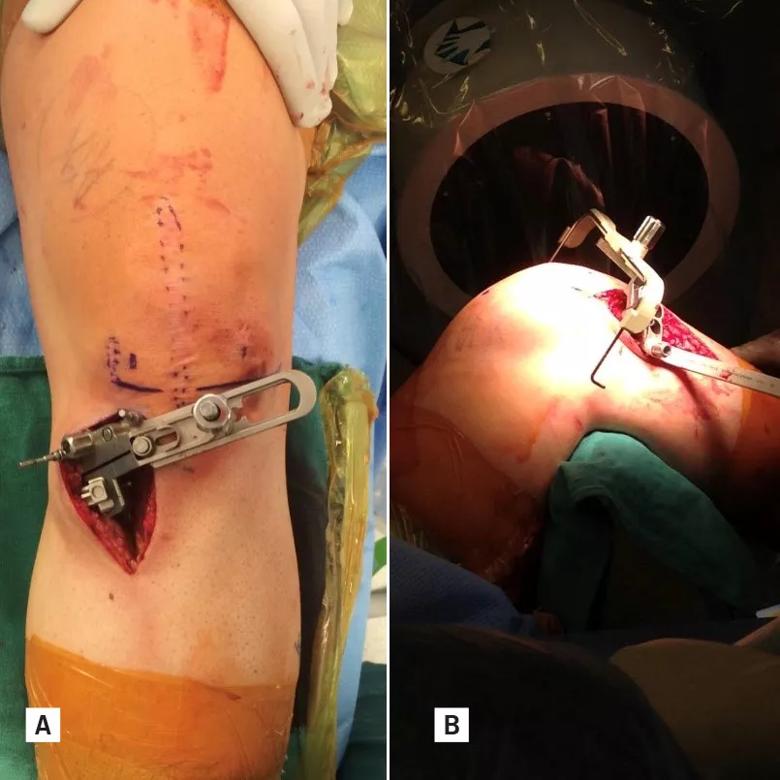
Figure 2. Intraoperative views (2A, 2B) of an intraoperative biplanar alignment jig used to perform accurate high tibial osteotomy correction.
The patient recovered remarkably well. Post-operative imaging demonstrated satisfactory healing and maintained limb alignment (Figures 3A & B). As soon as he completed his dedicated post-operative physical rehabilitation protocol after his most recent knee surgery, he began working with a personal trainer to prepare for an Ironman event, which he would go on to complete less than one year later.
Given the complexity of his condition and the procedure, he will likely require a lifetime of follow-up care. His rehabilitation and athletic prowess is undoubtedly a testament to him and to his psyche and motivation, which provide added benefit to the orthopaedic and biologic care he received at Cleveland Clinic.
As a specialty center, we treat many patients with rare conditions, like AVN, offering a diverse, multimodal approach to surgical and nonsurgical interventions. Our goal is to work with the patient to leverage advanced techniques to preserve damaged joints, rather than replace them, which was the approach we took in this particular case. This case harnessed both biologic and mechanical techniques to optimize the clinical result. Every patient is different, but in many cases, the longer a person’s original joints can be maintained, the better — even if we can delay a replacement for another 5, 10 or 15 years.
Ours is one of the few centers in the United States that provides this level of comprehensive care for the hip/pelvis and entire lower extremity. We evaluate and treat patients of all ages for consultations and second opinions. Specialists and subspecialists from many areas work together as one unit, and draw on resources from research, to education, to advanced diagnostics and procedural interventions.

Figure 3. Postoperative anteroposterior pelvis (3A) and bilateral knee (3B) radiographs.
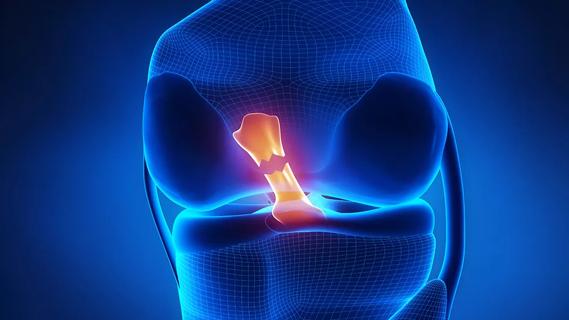
Study reports zero infections in nearly 300 patients
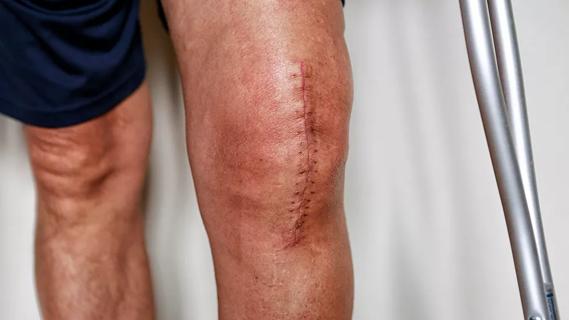
How to diagnose and treat crystalline arthropathy after knee replacement
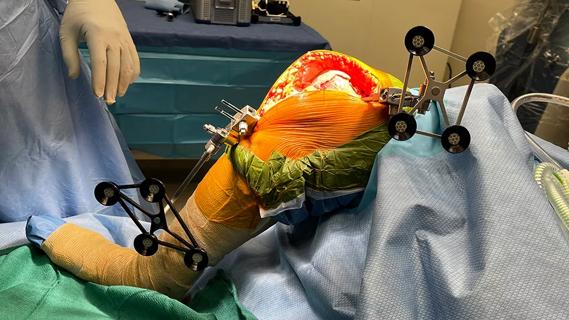
Study finds that fracture and infection are rare

Reduced narcotic use is the latest on the list of robotic surgery advantages

Cleveland Clinic orthopaedic surgeons share their best tips, most challenging cases and biggest misperceptions

How it actually compares to posterior and lateral approaches
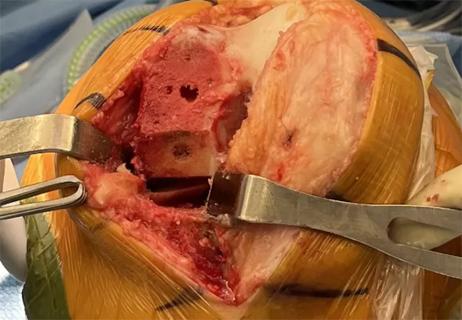
When procedure is performed by high-volume surgeons, outcomes are comparable to total knee replacement
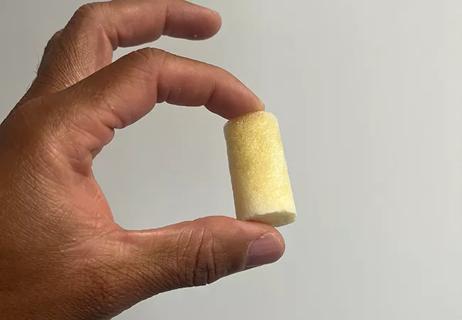
Clot substitute helps rejoin the stumps of a torn ligament